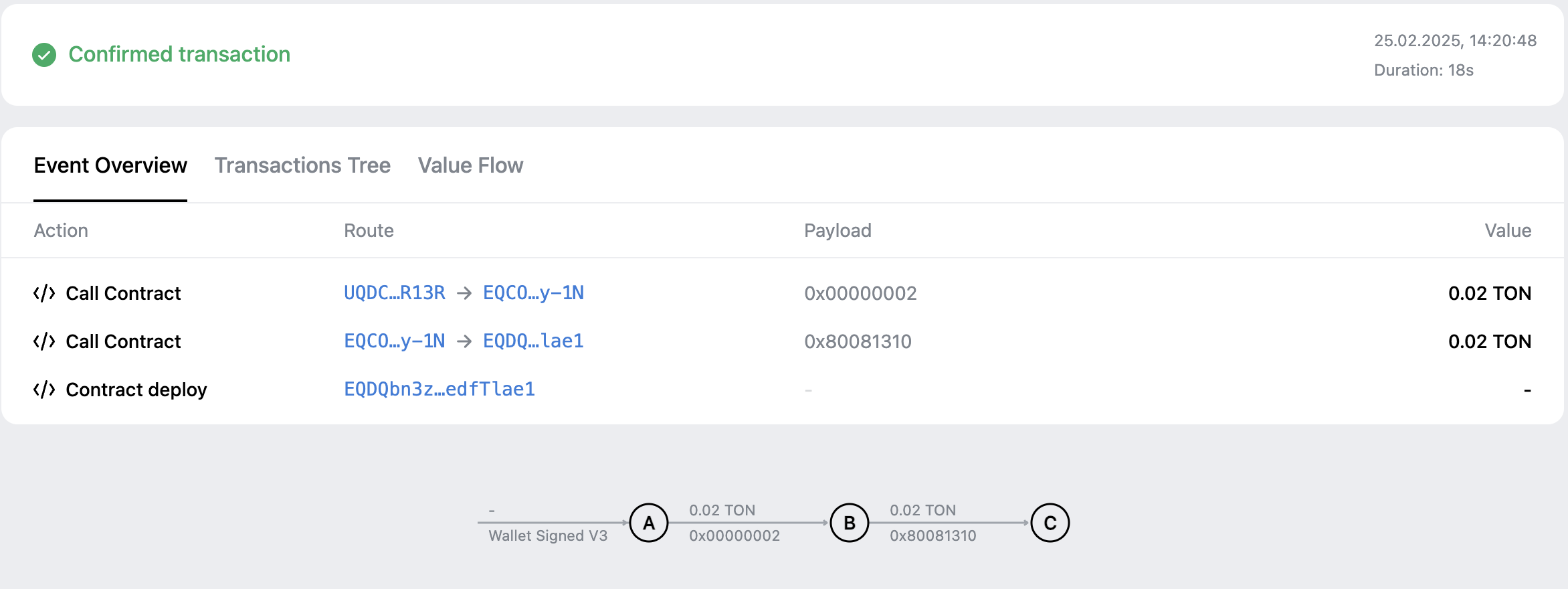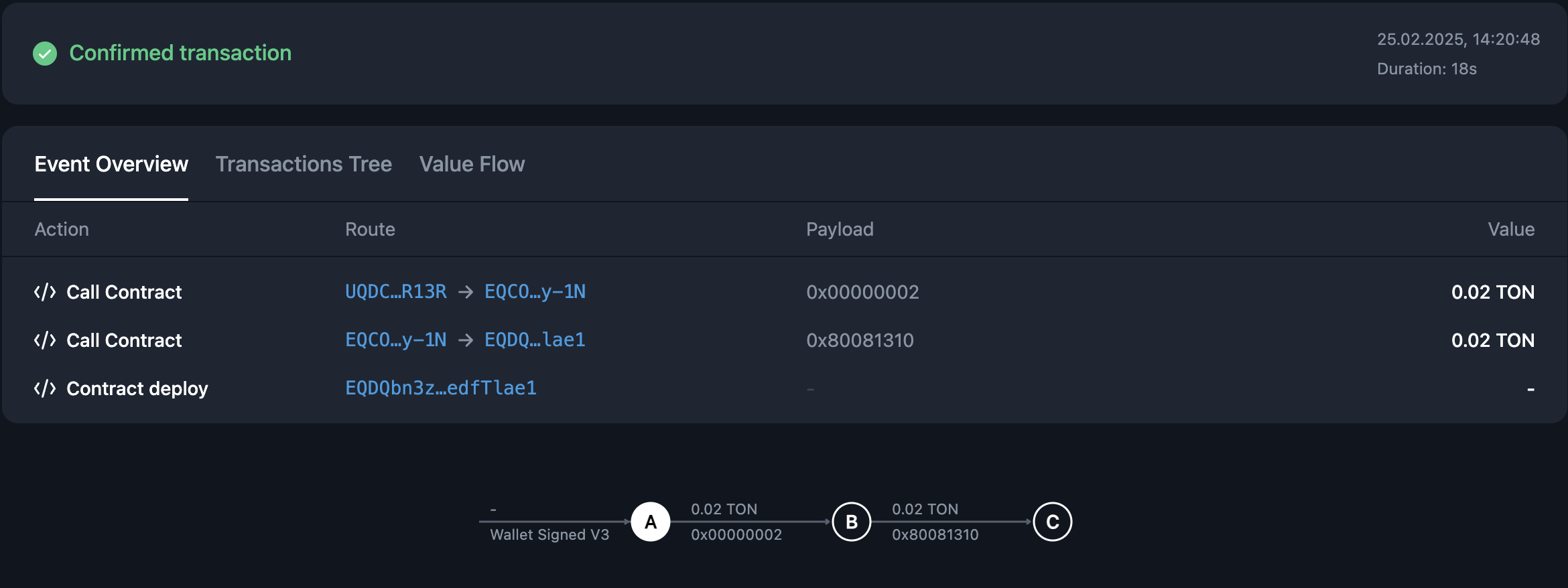

lt values indicated for every message.


Transactions may be triggered not only by external messages but also by tick-tock events, commonly used within internal TON blockchain contracts, such as governance or elector contracts.
Using traces in Tonviewer
In Tonviewer, traces are visualized as directed acyclic graphs (DAGs), where transactions are nodes and messages are edges, showing the full sequence of account state changes triggered by a single external message.Tracing operations
Traces offer a high-level view of an operation, illustrating how multiple transactions and messages interact to produce the final result. Within the graph, related transactions are grouped into human-readable actions, providing developers with both the low-level transaction flow and the corresponding higher-level operations. Example The NFT transfer illustrates a single operation that consists of three transactions, each triggered by messages. To learn how to read traces, follow this article.

High-level access using API
To fetch transaction data, use the high-levelGET /traces endpoint.
This method allows you to retrieve all related transactions for a given operation, without parsing individual transactions.